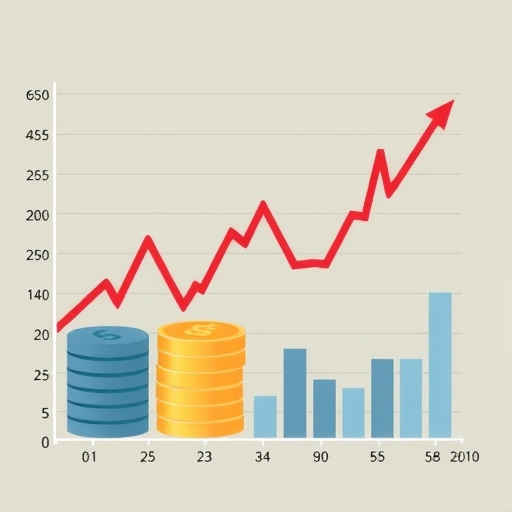Decoding BYN: From Currency Codes to Corporate Tickers and Media Bylines
Navigating the world of finance and information requires a keen eye for detail. Often, a simple three-letter code or a common term can hold vastly different meanings depending on the context. One such example is **BYN**. When you encounter this acronym, what exactly are you dealing with? Is it a national currency, a publicly traded company, or something else entirely?
As you embark on your investment journey, whether you’re a newcomer or a seasoned trader looking to deepen your understanding, mastering the language of the market is fundamental. This isn’t just about technical charts or fundamental analysis; it’s also about correctly interpreting the information sources you rely on. Today, we’re going to unpack the various significant meanings of **BYN**, primarily within the financial sphere and its related landscapes, to help you avoid confusion and build a more robust understanding of the data you encounter.
We’ll explore its role as a currency code, delve into a specific company that might be associated with it, and even touch upon a related concept in journalism that shares a similar sound – the ‘byline’ – because understanding *where* your information comes from is just as crucial as understanding the information itself. Think of us as your guide through this linguistic and financial maze, breaking down complex ideas into understandable parts. Ready to decode **BYN**?
The investigation into **BYN** breaks down into several major aspects:
- Understanding **BYN** as the Belarusian Rouble’s currency code.
- Exploring its potential association with Banyan Gold Corp. as a corporate identifier.
- Examining the term ‘byline’ in the context of financial journalism and its importance.

BYN as Currency: The Belarusian Rouble’s Modern Identity
For many in the international financial community, the most common and official meaning of **BYN** relates to currency. Specifically, **BYN** is the ISO 4217 currency code for the **Belarusian Rouble**. But this isn’t just any rouble; it’s the version that came into effect after Belarus’s significant redenomination in July 2016.
Before 2016, the Belarusian Rouble had accumulated many zeros over years of inflation. To simplify calculations and transactions, the country undertook a monetary reform, dropping four zeros from the currency’s face value. The old currency code was **BYR**. The new currency, represented by **BYN**, literally means 10,000 old Belarusian Roubles. This was a critical moment for the Belarusian economy and for anyone involved in international trade or finance with the country.
Understanding the **ISO 4217** code is essential in the global financial system. This standard, published by the International Organization for Standardization (ISO), defines three-letter codes for currencies around the world. These codes are used in banking and business globally to avoid confusion where different countries might use currencies with the same name (like dollars or pounds) or when discussing exchange rates. When you see **BYN** on a currency exchange platform or in a financial report concerning Belarus, you know precisely which unit of value is being discussed.
For instance, if you’re looking up the exchange rate between the US Dollar and the Belarusian Rouble, you’d typically search for USD/BYN. This standardisation is vital for automated trading systems, international wire transfers, and financial reporting, ensuring that everyone is speaking the same monetary language. Ignoring or misunderstanding these codes can lead to significant errors in transactions or financial analysis. So, remember, in the world of currency, **BYN** firmly points to the post-2016 Belarusian Rouble.

BYN as Corporate Identifier: Introducing Banyan Gold Corp.
While **BYN** has a clear, official meaning as a currency code, abbreviations and tickers in the financial markets aren’t always strictly standardized across all platforms or contexts outside of primary exchanges. You might occasionally encounter **BYN** in reference to a specific company, particularly in the context of stock market data or news.
One notable entity potentially associated with the abbreviation **BYN** is **Banyan Gold Corp.** This is a publicly traded company operating in the mineral exploration and development sector. Based in Canada, Banyan Gold focuses primarily on gold projects located in the Yukon Territory. This region in northwestern Canada is known for its significant mineral potential, building on a history stretching back to the Klondike Gold Rush.
Banyan Gold Corp. isn’t a massive, established mining giant yet; it operates as a junior exploration company. Its business involves identifying, acquiring, and developing mineral properties with the aim of discovering economically viable gold deposits. This stage of the mining lifecycle is often characterized by significant geological fieldwork, drilling programs, and technical studies, requiring substantial capital investment before any ore extraction can begin.
The company’s key assets include the **AurMac Project**, located near Mayo, Yukon, the **Nitra Claims**, and the **Hyland Gold Project** near Watson Lake, Yukon. These projects represent the core focus of Banyan’s exploration efforts. The success of such a company hinges heavily on its ability to prove up mineral resources and reserves through exploration and demonstrate the economic feasibility of extracting them. For investors, understanding the specific projects and their geological potential is crucial when evaluating a junior explorer like Banyan Gold Corp.
It’s important to note that while **BYN** *could* be used as a shorthand or ticker symbol for Banyan Gold Corp. on certain less common platforms or databases, its official primary stock ticker symbol is likely different on major exchanges (for instance, on the TSX Venture Exchange, its ticker is BYN). However, in broader financial discussions or data aggregators, you might see the abbreviation **BYN** used, requiring you to use context – is the discussion about currency or a specific company’s stock?
A Financial Snapshot: Peering into Banyan Gold Corp.’s Metrics
If we encounter **BYN** in the context of Banyan Gold Corp., what kind of financial picture does the company present? Looking at key financial metrics gives us insight into its current scale, health, and performance. Remember, as a junior exploration company, its financials will look very different from a large, revenue-generating gold producer.
| Metric | Value |
|---|---|
| Market Capitalization | Approximately CAD 88.38 Million |
| Total Assets | Around CAD 72.77 Million |
| Net Income (TTM) | Approximately -4.28 Million CAD |
| Return On Equity (TTM) | Approximately -5.78% |
What do these numbers tell us? They confirm that Banyan Gold Corp. is in the exploration phase. Its value (market cap) is based primarily on the perceived potential of its mineral properties and the market’s outlook on gold prices and the company’s ability to find and develop deposits. The negative net income and ROE are not necessarily red flags *for an exploration company*, but rather indicators of its lifecycle stage. Investors in such companies are speculating on future discovery and development success, not current profitability.
Analyzing these metrics is crucial if you consider investing in the mining sector, especially in junior explorers. You need to evaluate not just these numbers but also the quality of their geological data, the experience of their management team, the location and scale of their projects, and the overall market conditions for commodities like gold. It’s a sector driven by both geological potential and market sentiment.
The Byline Connection: Attribution in Financial Journalism
Now, let’s pivot slightly. While not a direct meaning of the abbreviation **BYN**, the term ‘byline’ is often brought up in searches related to ‘BYN meaning’ because of the phonetic similarity and the shared domain of ‘information’. Understanding the concept of a **byline** is crucial for anyone consuming news, including financial news, because it speaks directly to the source and credibility of the information you are reading.
A **byline** is quite simply the author’s name printed with a newspaper or magazine article. It typically appears between the headline and the body of the text, or sometimes at the end. Its primary purpose is attribution – it tells you who wrote the article. This practice is a cornerstone of modern journalism, acknowledging the writer’s work and holding them accountable for its content.
The widespread use of bylines is a relatively modern development, gaining significant traction in the late 19th century. Before this, many articles, even important ones, were published anonymously or simply credited to the newspaper itself. Figures like Joseph Hooker, a Union general during the American Civil War, required correspondents to sign their reports, contributing to the shift towards attribution. Conversely, powerful publishers like Adolph Ochs of The New York Times were initially resistant, preferring to emphasize the institutional voice of the newspaper over individual reporters.
Today, bylines are standard in most news publications. They serve several important functions:
- Accountability: The writer takes responsibility for the accuracy and fairness of the report.
- Credibility: Readers can associate the reporting with a known journalist, potentially someone they trust or whose expertise they recognize.
- Building Reporter Reputation: Bylines allow journalists to build their careers and establish expertise in specific areas, like financial reporting.
- Source Indication: While not always the case, a byline can sometimes hint at the source or perspective of the information.

However, it’s also important to be aware that the presence of a byline doesn’t automatically guarantee absolute truth or lack of bias. Issues like **false attribution**, where a byline is assigned incorrectly (either accidentally or intentionally), can occur. This could involve assigning a story to a senior reporter who didn’t write it or using a pseudonym for misleading reasons. While less common in reputable financial journalism, being aware of this possibility underscores the need for critical evaluation of any news source.
When you read financial news – whether it’s about currency movements (like the **BYN**), company performance (like **Banyan Gold Corp.**), or broader market trends – paying attention to the byline can provide valuable context. Who is this reporter? What is their track record? Does the publication have a known editorial stance? These questions, prompted by the simple presence of a byline, are part of the process of evaluating the trustworthiness of the information you are using to make investment decisions.
Expanding the Lens: Other Meanings Lurking
While the Belarusian Rouble and Banyan Gold Corp. are the most likely financial or business-related contexts for **BYN**, and the ‘byline’ is a related term in the information domain, it’s worth acknowledging that abbreviations can have multiple meanings across *many* different fields. A quick look through abbreviation databases reveals other potential, though less financially relevant, interpretations of **BYN** or ‘byn’.
For instance:
- In aviation, **BYN** is the IATA airport code for **Bayankhongor Airport** in Mongolia. Clearly, not relevant unless you’re analyzing Mongolian travel data.
- In linguistics, **BYN** is an ISO 639-3 code for the **Blin language**, spoken in Eritrea. Again, fascinating, but not pertinent to financial markets.
- In Swedish slang, ‘byn’ is the definite singular form of ‘by’ (village) and can be used informally to refer to **Rinkeby**, a suburb of Stockholm. This is a purely cultural reference.
- In the Vilamovian language, ‘byn’ is reported to mean ‘bee’.
These examples serve to highlight a critical lesson for anyone dealing with information, especially in interconnected fields like global finance: **context is paramount**. Seeing “BYN” in isolation isn’t enough. You must consider *where* you are seeing it. Is it on a currency trading platform? A stock quote website? A linguistic dictionary? An airline ticket?
This principle extends beyond decoding abbreviations. It applies to all data points and news articles you encounter. Understanding the source, the domain, and the surrounding information is essential to correctly interpret what you see and hear. For an investor, applying this critical thinking prevents misinterpretations that could lead to poor decisions.
Connecting the Dots: Why These Seemingly Unrelated Meanings Matter
So, we’ve looked at **BYN** as a currency, potentially as a company ticker, and a related concept, the byline. At first glance, these might seem entirely disconnected. A national currency in Eastern Europe, a junior gold mining company in Canada, and an author’s credit in an article – how do these pieces fit together for you as an investor or someone interested in finance?
The connection lies in the nature of financial information itself. As investors, we rely on vast amounts of data and news to make decisions. This information comes from various sources: official government statistics (like currency codes and economic data), company reports (like financial statements from **Banyan Gold Corp.**), and journalistic reporting (found in articles *with bylines*). Each piece of information, regardless of its source, contributes to the overall picture we form of the market and potential investments.
Understanding the specific meaning of **BYN** in context prevents fundamental errors. Mistaking a currency code for a stock ticker, or vice versa, could lead to trying to trade a non-existent asset or misinterpreting economic data. Similarly, while ‘byline’ isn’t a financial term itself, the byline is often attached to the financial news you read. Evaluating the source behind that byline is part of assessing the reliability of the information about currencies, stocks, or anything else.
Consider this: You read a financial article about potential opportunities in the mining sector, and it mentions a company with the ticker “BYN”. If you mistakenly think “BYN” only refers to the Belarusian Rouble, you’ll be confused and potentially dismiss relevant information. Conversely, if you see a currency quote for BYN/USD and confuse it with a stock price, you could make a grave error in a forex trade. The ability to differentiate these meanings based on context is a basic but powerful skill in financial literacy.
Furthermore, even the seemingly unrelated meanings outside finance reinforce the broader point about abbreviations and terminology. They remind us that shortcuts and acronyms are convenient but require foundational knowledge to be interpreted correctly. This principle applies across all domains of knowledge, including the complex and often jargon-filled world of finance.
Navigating Information: Applying Knowledge to Investment Decisions
How can you use this understanding of differentiating terms like **BYN** and concepts like the byline in your actual investment process? It boils down to critical thinking and verifying your information sources.
When you encounter financial data or news, always ask yourself:
- What is the source? Is it an official exchange, a reputable financial news outlet, a company’s investor relations page, or an unverified blog?
- What is the context? Is this information presented on a stock trading platform, a currency converter, an economic report, or a general news article?
- Are abbreviations or terms used correctly? Does **BYN** clearly refer to the Belarusian Rouble in a currency context, or is it being used as a stock ticker? Is the journalist behind the byline reporting on their area of expertise?
- Can I cross-reference this information? Look for the same data point or news item from multiple reliable sources to confirm its accuracy and interpretation.
For example, if you read a news report with a byline discussing an increase in the price of **Banyan Gold Corp.** shares, you should verify the stock’s performance on a reliable financial data platform using its confirmed ticker symbol. If you read an economic report mentioning **BYN** and its movement against other currencies, you should check official central bank data or reputable currency exchange sites for confirmation.
This systematic approach helps build a solid foundation of reliable information, which is the bedrock of informed investment decisions. It’s not enough to just consume data; you must process it, understand its origin, and interpret it correctly based on its specific context. This rigorous approach is a hallmark of successful investors who prioritize accuracy and understanding over speed or speculation based on potentially misinterpreted information.
Applying this knowledge to investment decisions means taking the time to learn the specific terminology of the assets you are interested in – whether it’s currency codes for forex trading, ticker symbols for stocks, or the various metrics used in company analysis. It also means being discerning about the news and analysis you consume, paying attention to the byline and the reputation of the publication.
If you’re exploring opportunities in global markets, particularly currencies or diverse assets, understanding the nuances of financial platforms is crucial.
If you’re considering starting forex trading or exploring other CFD products, then Moneta Markets is a platform worth considering. It’s based in Australia and offers over 1000 financial instruments, suitable for both beginners and professional traders.
Knowing where to find accurate information about currency codes like **BYN** or company financials is the first step in making informed trading decisions.
Beyond the Acronym: The Value of Deep Context
Our journey through the meanings associated with **BYN** underscores a broader truth in finance and many other technical fields: abbreviations and simplified terms are necessary tools for efficient communication, but they demand foundational knowledge to be used effectively. Relying solely on a surface-level understanding or assuming one meaning fits all contexts is a recipe for confusion and potential errors.
The story of **BYN** touches upon several distinct but interconnected areas: international finance (currency codes), corporate finance (company identifiers and financials), and media (journalism and attribution). For someone looking to invest, knowledge in all these areas contributes to a more complete picture.
Understanding the economic context of the **Belarusian Rouble (BYN)** involves knowing about Belarus’s economy, monetary policy, and its place in global trade. Understanding **Banyan Gold Corp.** involves knowing about the mining industry, geological exploration risks, and commodity markets. Understanding the role of a **byline** involves knowing about the principles of journalism, editorial standards, and how news is gathered and reported.
Bringing these seemingly disparate pieces together allows you to:
- Correctly identify whether “BYN” refers to a currency or a stock in a given piece of data.
- Assess the potential risks and opportunities associated with **Banyan Gold Corp.** based on its financials and industry context.
- Evaluate the credibility of a financial news article about either the Belarusian Rouble or a mining company by considering the source and author (byline).
This deeper level of contextual understanding is what separates informed analysis from superficial observation. It allows you to see how different pieces of information relate to each other and build a more robust mental model of the financial world you are operating in.
Think of it like learning a new language. Knowing individual words is a start, but understanding grammar, sentence structure, and cultural nuances allows you to communicate effectively and avoid misinterpretations. Similarly, knowing financial terms like **BYN** is just the beginning; understanding the systems and contexts in which they operate is where the real value lies.
A Look Ahead: What to Watch For
The financial world is constantly evolving. Economies change, companies grow or shrink, regulations shift, and the way we consume information adapts. This dynamic environment means that staying informed isn’t a one-time effort but a continuous process.
For instance, the status of the **Belarusian Rouble (BYN)** can be affected by geopolitical events, sanctions, and the country’s economic policies. Monitoring news and official reports about Belarus is crucial if you have exposure to this currency or its economy. For **Banyan Gold Corp.**, future developments like exploration results, feasibility studies, financing rounds, or changes in gold prices will significantly impact its prospects and financial metrics. Following company news, industry reports, and commodity market trends is essential for anyone interested in this stock.
Furthermore, the landscape of financial journalism and information dissemination is also changing rapidly with digital media. While the concept of the byline remains important, understanding the different formats (articles, videos, podcasts), platforms (websites, social media, news aggregators), and potential influences (sponsored content, algorithms) on how you receive financial information is increasingly necessary.
As an investor, your ability to adapt and continuously learn is a key factor in long-term success. The lessons learned today about differentiating the meanings of **BYN** and understanding the importance of attribution through bylines are not isolated facts, but principles you can apply to new terms, new companies, and new information sources you encounter in the future. Keep questioning, keep verifying, and keep learning.
Choosing the right tools is also part of navigating the financial landscape effectively. Access to accurate real-time data, robust charting tools, and reliable news feeds is essential for making timely and informed decisions. The platform you use for trading or research plays a significant role in how easily you can access and process this information.
In choosing a trading platform, the flexibility and technical advantages of Moneta Markets are worth mentioning. It supports mainstream platforms like MT4, MT5, and Pro Trader, combined with high-speed execution and low spreads, providing a good trading experience.
Having the right platform can streamline the process of monitoring currencies like the **BYN** (in a forex context, if available for trading) or tracking the performance of stocks like **Banyan Gold Corp.** (if listed and available), helping you put the knowledge you’ve gained into practice.
Conclusion: Summarizing Our Journey of Decoding
We began our exploration aiming to understand the different meanings packed into the simple abbreviation **BYN**. We’ve seen that in the world of finance and information, context truly is king. **BYN** most officially serves as the **ISO 4217 currency code for the modern Belarusian Rouble**, a crucial detail for international banking and currency exchange after Belarus’s 2016 redenomination.
We then shifted to potentially encountering **BYN** as an identifier, likely a stock ticker, for **Banyan Gold Corp.**, a Canadian junior mining company focused on gold exploration in the Yukon. We examined its financial snapshot, seeing metrics typical of a company in the development phase – high exploration costs leading to negative net income, with value tied to the potential of its projects like AurMac, Nitra, and Hyland. Understanding these financials requires knowledge of the mining industry and the risks involved in exploration.
Our exploration also touched upon the **byline**, a related term in journalism. While distinct from the abbreviation **BYN**, the byline is fundamental to understanding the credibility and source of the financial news articles you read. It highlights the importance of author attribution and the need to evaluate the trustworthiness of reporting, whether it’s about currencies, stocks, or economic trends.
Finally, we briefly acknowledged other, less common meanings of **BYN** outside the finance and media realms, reinforcing the universal principle that abbreviations are context-dependent. For you, as an investor or aspiring trader, the key takeaway is the importance of verifying the specific meaning of any term or abbreviation you encounter, based on its source and context.
By understanding the different potential meanings of **BYN** – from a currency code critical for trading and economics to a possible identifier for a company in the resource sector, and even the importance of the byline in the news reporting that covers these topics – you are better equipped to navigate the vast sea of financial information. This ability to correctly interpret data is not just an academic exercise; it is a practical skill that forms the foundation of informed decision-making in the financial markets. Keep learning, keep asking questions, and always consider the context.
byn meaningFAQ
Q:What does BYN stand for in finance?
A:BYN is the ISO 4217 currency code for the Belarusian Rouble.
Q:What is Banyan Gold Corp.?
A:Banyan Gold Corp. is a junior mining exploration company based in Canada, focused on gold projects in the Yukon.
Q:What is the significance of a byline in an article?
A:A byline attributes the article to its author, indicating responsibility for the content and credibility of the source.
